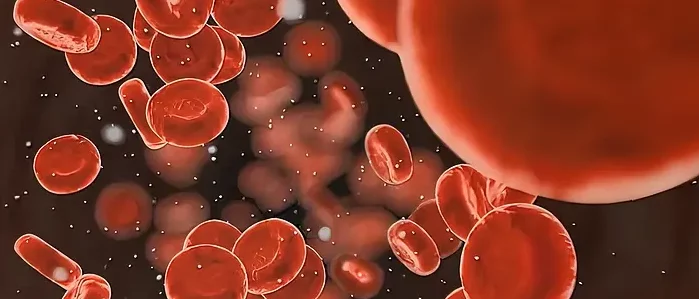How to Kill Bloodborne Pathogens When Cleaning Up

Accidents happen, and sometimes that includes blood spills. Whether it’s in a medical office, industrial setting, or public space, handling blood spills safely is critical to protecting everyone from harmful bloodborne pathogens (BBPs).
These microscopic pathogens, found in human blood and other bodily fluids, can transmit serious diseases. While the cleanup process may seem straightforward, handling it incorrectly can have serious consequences. In this guide, we’ll walk you through the steps to safely eliminate bloodborne pathogens, why it’s important, and when specialized training becomes essential for those responsible for cleanup.
Why Are Bloodborne Pathogens Dangerous?
Bloodborne pathogens, like the human immunodeficiency virus (HIV), hepatitis B (HBV), and hepatitis C (HCV), are infectious microorganisms that can cause serious, life-threatening diseases. Exposure to these pathogens poses significant health risks. Without proper cleanup, they can linger on surfaces for extended periods, creating long-term health risks for anyone in the vicinity. Handling bloodborne pathogens without the right tools and knowledge puts you, your colleagues, and any future occupants of the area at risk for infection. This is why the Occupational Safety and Health Administration (OSHA) mandates strict cleanup standards in workplaces to minimize these dangers.
The key takeaway? Treat every blood spill as if it contains harmful pathogens, and use appropriate safety protocols to protect yourself and others.
When Does Bloodborne Pathogen Exposure Happen?
Bloodborne pathogens are a risk in numerous settings beyond healthcare environments. Here are a few common scenarios where exposure to BBPs might occur:
- Accidents in the workplace: Blood spills from cuts, falls, or other injuries
- Public spaces: Accidents that result in blood spills in schools, gyms, and other communal areas
- Medical and dental facilities: Contact with patient bodily fluids during procedures
- Industrial or construction sites: Higher likelihood of injuries that could lead to blood spill exposure
- Households: Everyday accidents and caregiving situations or in-home healthcare
Understanding common situations where BBP exposure can happen emphasizes the importance of having trained personnel and readily accessible cleanup supplies in these settings.
How to Safely Kill Bloodborne Pathogens in a Spill
1. Identify The Spill and Secure The Area
Begin by assessing the spill’s size and location. Once identified, isolate the area to prevent anyone from accidentally walking through it. Use caution tape or warning signs to make the area clearly visible. Securing the area helps ensure no one unknowingly spreads contamination by tracking blood on their shoes, which could pose risks to a much larger area.
2. Protect Yourself from Bloodborne Pathogens
Personal protection should always be a top priority. Anyone who’s tasked with cleaning a blood spill should wear:
- Disposable bodysuits: These full-coverage suits help avoid direct contact with blood.
- Face shields: These shields protect the eyes, nose, and mouth from splashes.
- Latex gloves with cuffs: Ensure gloves fit snugly over the suit cuffs to create a complete barrier.
It may feel like overkill, but in situations involving bloodborne pathogens, it’s essential to err on the side of caution to prevent infection.
3. Clean Up the Blood Spill
Make sure the proper cleaning supplies are available before you begin cleaning up blood spills. You want to try and absorb as much blood as possible using disposable absorbent cloths or towels. The type of surface you’re cleaning should also be factored into your approach:
For porous surfaces: Blot the area to prevent further spreading. Porous surfaces are trickier, so it’s essential to remove as much blood as you can.
For hard surfaces: Use a cloth to soak up as much blood as possible.
4. Disinfect the Area Properly
OSHA mandates that all blood spills be disinfected thoroughly. Use a broad-spectrum disinfectant specifically approved to kill bloodborne pathogens. If that’s unavailable, a bleach solution mixed in a 9:1 ratio (9 parts bleach to 1 part water) is effective.
- Apply disinfectant: First cover the area completely, then allow the solution to sit for at least 25 minutes.
- For porous surfaces: Use a brush to agitate the area and ensure the disinfectant penetrates the surface.
Repeat this process if necessary to ensure complete disinfection. Keep in mind that bleach can discolor certain surfaces, so test a small area first if possible.
5. Dispose Of Cleaning Materials And Disinfect Equipment
After cleanup, make sure to place all disposable materials (this includes cloths, gloves, face shields, and suits) into a red biohazard bag. If the outside of the bag becomes contaminated, double-bag it to prevent leaks. You’ll also need to disinfect any reusable items, such as mop handles or buckets, to ensure they’re safe for future use.
Reminder: Proper disposal isn’t just a suggestion — it’s required by law to ensure medical waste is handled safely.
What Is Bloodborne Pathogens Training?
Bloodborne pathogens training teaches individuals how to safely handle, clean, and dispose of blood and other potentially infectious materials (OPIMs). Required by OSHA for any employees who may come into contact with BBPs, the training typically includes:
- Proper PPE usage: Learning what gear to wear, how to wear it correctly, and how to remove it without contamination
- Cleanup protocols: Steps for safely cleaning, disinfecting, and disposing of contaminated materials
- Understanding legal standards: Knowledge of OSHA and other regulatory requirements
- Recognizing risks: Training to identify potential BBP exposure scenarios and respond effectively
Bloodborne pathogens training can be delivered in a classroom or online and often includes certification, which helps maintain safety standards across industries.
Medical Waste Pros Is the Best Solution for Bloodborne Pathogen Cleanup
Cleaning up bloodborne pathogens is a task that requires expertise, the right equipment, and a commitment to safety. Medical Waste Pros connects you with a network of certified professionals who can provide the supplies, training, and cleanup services you need. We understand the importance of thorough cleanup for the safety of your workplace and the health of your team.
With Medical Waste Pros, you’ll get prompt, reliable service from industry experts who prioritize safety, compliance, and efficiency. Whether you’re seeking specialized cleaning kits, PPE, or comprehensive cleanup services, Medical Waste Pros has you covered. Call us today at (888) 755-6370 or fill out our form for a quick, customized quote. Let us help you maintain a safe, pathogen-free environment.










